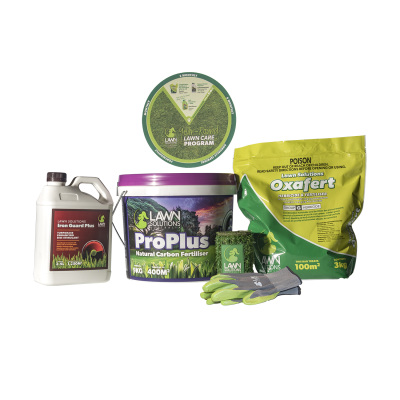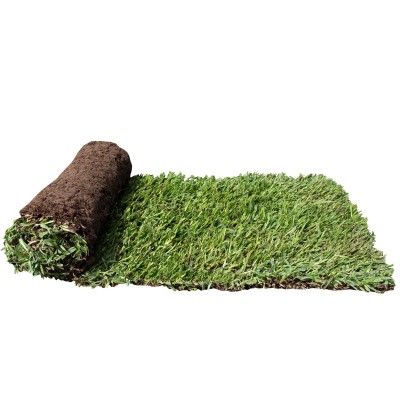Are you wanting to get your lawn on the mend but not sure if you can fit it into your budget? This blog looks at how you can get your lawn looking its best, even when working on a budget this spring.
Aerate Your Soil
Aerating your soil will help create space below ground for your soil to take in air, nutrients, and water. This will help stop and avoid many problems associated with compaction, like drainage issues, bare patches, weeds, dry spots, and fungal diseases. Aerating your lawn will also help the grass roots grow deeper into the soil base so the grass can grow stronger and more vigorously.
To aerate your soil, you can manually use a sturdy garden fork and drive it into the ground. Give it a good wiggle back and forward to help decompact the soil base. Continue this process across the lawn and aim for around 8 – 10cm apart.

Weeding Your Lawn
One of the quickest and easiest ways to remove most types of weeds is to pull them out by hand.
- Remove weeds when they are small to help prevent them from spreading. At this stage, they are also unlikely to have gone to seed, preventing them from spreading further.
- Remove all the weed’s roots.
- Break up your lawn into smaller sections. Remove weeds from one area daily to help make the task seem less daunting.
- Weed after rain. This is when the soil will be damp, making it easier to remove weeds.
Please note that some weeds are not recommended to be removed by hand, including Nutgrass, Soursob, and Onion Weed. Please have a look for more information here.

You Should Mow Your Lawn Regularly
Mowing your lawn regularly will not only help your lawn look tidy but will improve the health of your lawn. By mowing your lawn regularly, you will:
- Encourage lateral growth, helping your lawn become thicker.
- Help reduce stress on the lawn when removing too much of the leaf at once.
- Help encourage a consistent growth pattern.
- Help your lawn be less susceptible to disease, weeds, and pests.
So how often should you mow? We recommend mowing your lawn frequently enough so that only one-third of the leaf will be removed with each pass. In the warmer months, while the lawn is actively growing you will need to mow more frequently. In the cooler months, the lawn will slow down in growth and will require less frequent mows.
Mowing frequently will also help make mowing easier as you won’t need to push the mower through tall grass.

Should I Mow with the Catcher Off?
Your lawn’s clippings are a great source of nitrogen and can act as a natural fertiliser for your lawn. When leaving your clippings on the lawn, it is best to ensure you frequently mow and that only a small amount of the leaf is removed. This will help avoid the grass underneath becoming smothered.
When Should I Fertilise My Lawn?
If there is room in the budget, fertilising your lawn will help provide essential nutrients to the lawn. This will help give your lawn a boost and will help provide the nutrients your lawn needs to stay healthy.
When choosing a fertiliser, we recommend using our Lawn Solutions Premium Fertiliser. This fertiliser has a well-balanced ratio of nutrients and is suitable for all lawn varieties.
For more lawn care tips and advice, check out our other lawn care blogs here.


